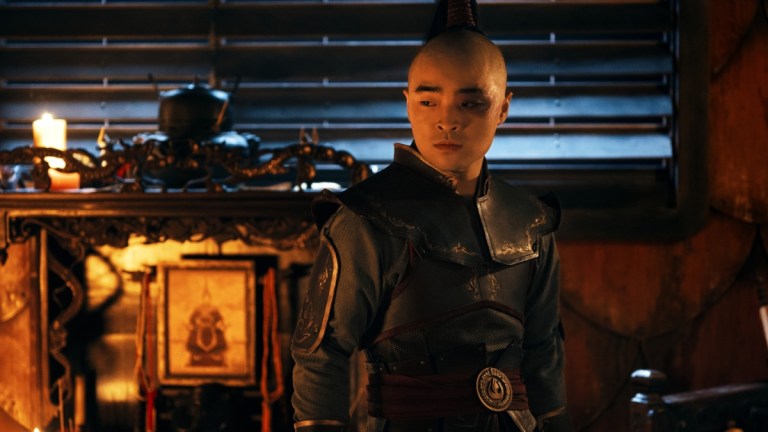The Biggest Change in Netflix’s Avatar: The Last Airbender Comes at Zuko’s Expense
The live-action Avatar: The Last Airbender leaves out an important event in Zuko's development.

This article contains spoilers for Netflix’s Avatar: The Last Airbender episode 2.
Everyone loves Zuko. Avatar: The Last Airbender’s villain turned emo boy turned hero has one of the greatest character arcs in animation, if not all of television history. Starting as the bitter, vengeful nemesis to Avatar Aang, Zuko hoped that if he could capture the Avatar for his father, he’d finally be able to regain his honor. This single-minded approach meant that through much of the show’s first season, Zuko was the main villain. He was willing to burn the world down if it meant accomplishing his goal and that made him a genuine threat.
The Netflix live-action series, though largely faithful to the source material, makes a massive error in not understanding this key part of Zuko’s character early on. Season 1 episode 2 of the Netflix series, “Warriors” which adapts season 1 episode 4 of the original series, “The Warriors of Kyoshi” changes a key element of Zuko’s involvement in the story which undercuts his overall development.
In the original episode, Zuko tracks Aang to Kyoshi Island and does battle with him in the village. Zuko and his soldiers don’t hold back and their fire bending causes massive damage. Huge fireballs destroy homes. Buildings are decimated. The statue of Avatar Kyoshi is set ablaze. Zuko doesn’t care, he’s only focused on capturing Aang.
The Avatar escapes with his friends, the only option to prevent Zuko from destroying the entire village. If they leave, Zuko will follow, and they’re right. Once Zuko discovers Aang’s escape, he orders his soldiers to pursue. Even though Aang manages to put out the fires as he escapes, Zuko has inflicted permanent damage to the village.
This was a key early moment that demonstrated just how far Zuko was willing to go. Remember, even though we all love where ended up in the animated series, he started out as the primary antagonist of the show. Zuko was ready to ruin the lives of an entire village to accomplish his goals. He was a threat, one that also showed Aang the consequences of his role as the Avatar.
The Netflix version keeps the main points of the story but swaps characters. Here it’s Commander Zhao (Ken Leung) that attacks the village and sets it aflame while Zuko (Dallas Liu) avoids the conflict. He instead follows a suggestion from Iroh (Paul Sun-Hyung Lee) and discovers Aang (Gordon Cormier) at the Avatar Kyoshi statue. Katara (Kiawentiio) tries to hold Zuko off but Aang, possessed by Kyoshi’s spirit, stops him. Aang absolutely wrecks Zuko. He doesn’t stand a chance against the powerful former incarnation of the Avatar. Aang launches himself to the village and drives Zhao away, Zuko never causing any damage like he did in the original series.
Why was this change made? If we had to guess it was probably to build up Zhao as a bigger threat in the narrative, which makes sense considering where the season goes, but it robs Zuko of such a critical moment for his character. Without this we lose the sense that he’s a key threat to not just Aang but the whole world. Instead, Aang powers-up to Kyoshi super mode and makes him look like a joke. This is a decent way to make Zuko more furious at Aang for directly humiliating him in battle, but it doesn’t match up to the original episode.
There, Aang didn’t beat Zuko outright. Instead he managed to briefly gain the upper hand in the fight, just long enough to escape and force Zuko to give chase. It lets Aang get a partial win but makes sure Zuko remains a threat in the narrative. As the Netflix series portrays it, Zuko isn’t someone Aang needs to worry about and that seriously damages his character. Zuko’s arc is so satisfying in the original series because he makes such a huge change over the course of the show. He needs to start off as evil, the big bad, so his change to a good guy hits with as much narrative weight as possible.
It seems as though the team behind the Netflix series was reluctant to make Zuko too violent or too edgy. Perhaps they thought if Zuko burned a whole village he’d be unlikable. If so, it wasn’t a good choice and shows a lack of understanding of that original episode. While Zuko is ruthless in it, key decisions are made by the original show’s creative team to keep him sympathetic. Zuko doesn’t just burn the village because he feels like it and has no heart. He only cares about the Avatar and the village is simply collateral damage. It walks a fine line that keeps him threatening while still not making him a total irredeemable monster. The Netflix version, in avoiding this, robbed us of the moment that helped solidify who Zuko was and weakens his character overall.
Netflix’s Avatar: The Last Airbender made a lot of smart and interesting choices in adapting the source material but this wasn’t one of them. The show has a lot of work ahead of it if it wants to make their version of Zuko just as powerful a character as the original.
All eight episodes of Avatar: The Last Airbender are now streaming on Netflix.
